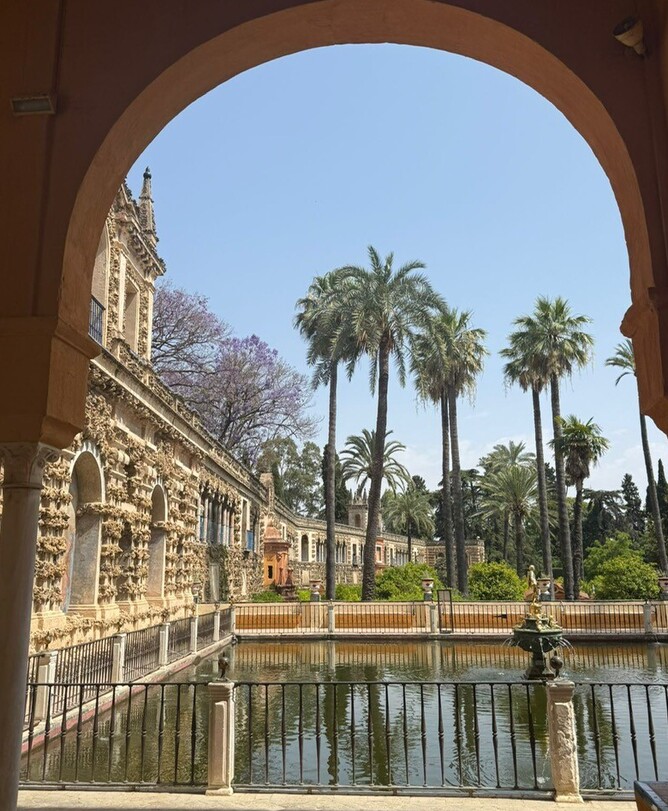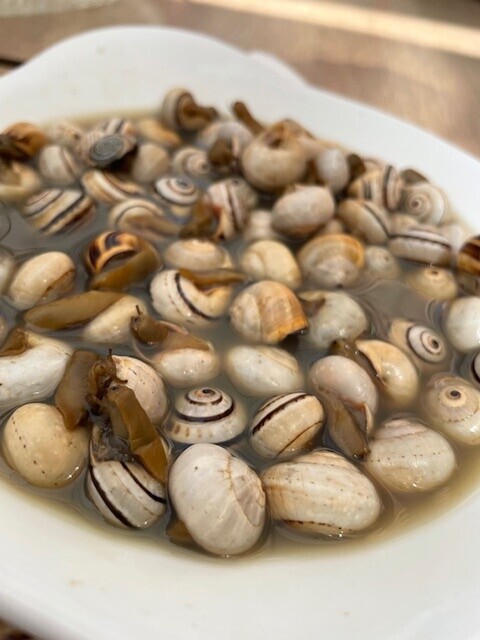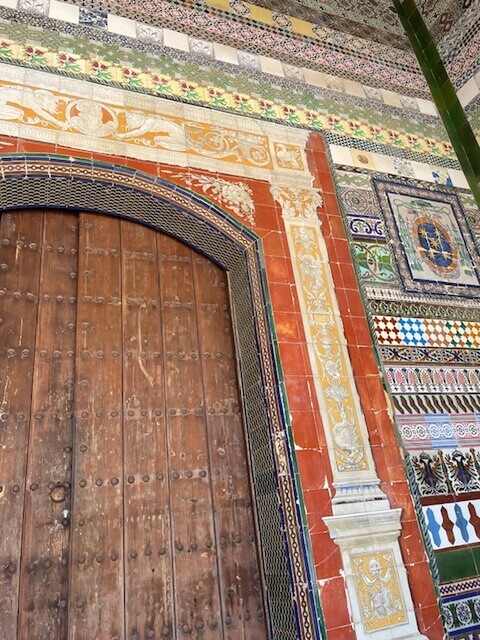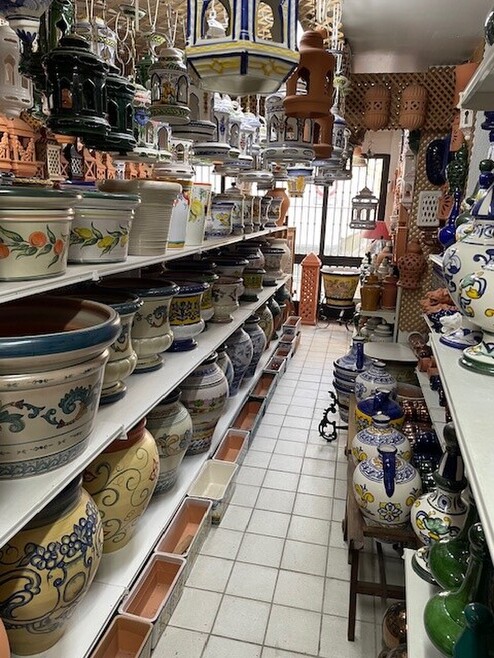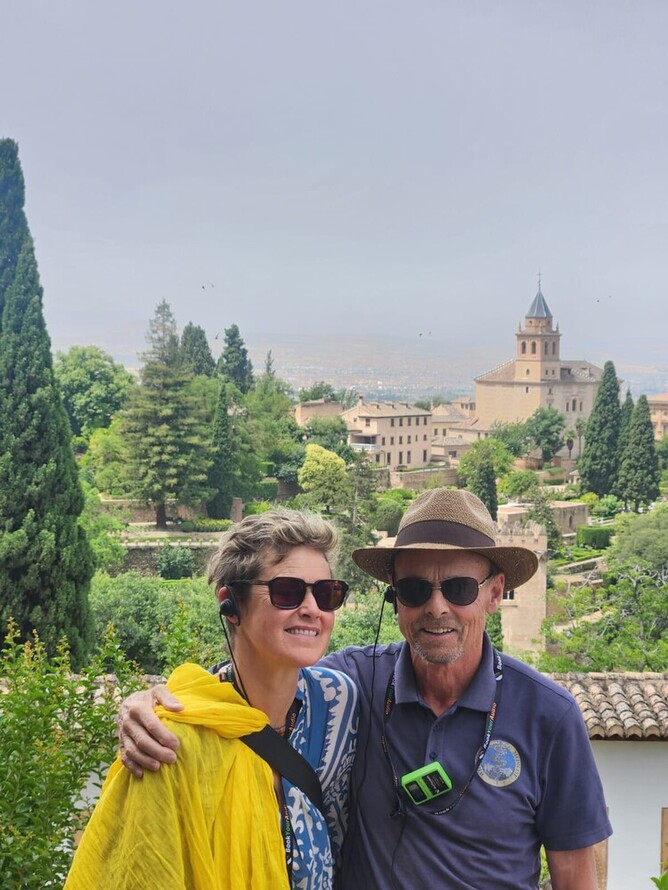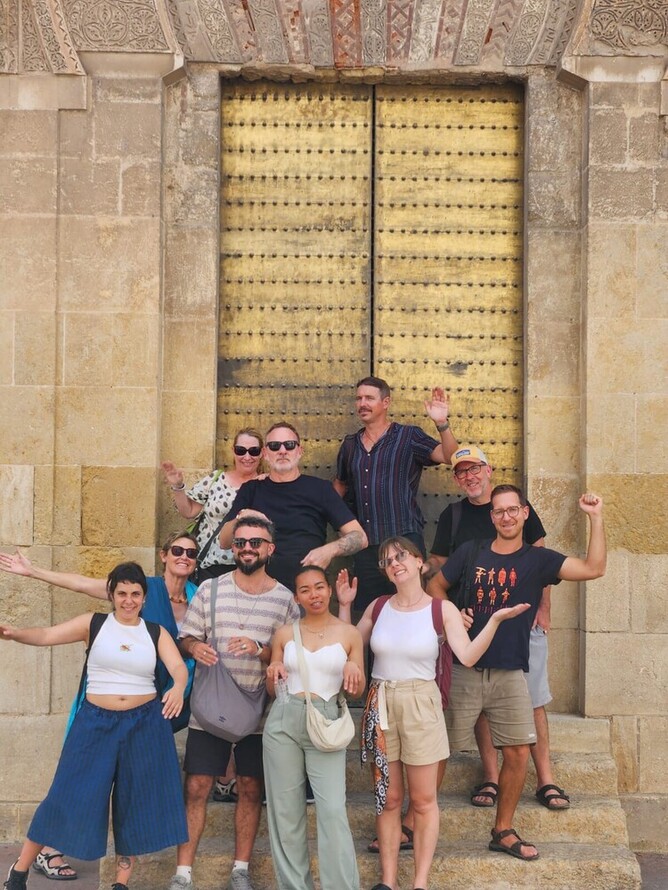Sevilla, Cordoba & Granada (and snail season)
The drive South from Castilla La Mancha twisted through a number of the mountainous sierras that separate Spain's central plains from Andalucia to the South. It's an impressive landscape that truly offers a sense of scale and at many points all that we could see were endless olive groves stretching off into the distance on either side of the road.
As per our standard MO we checked into our accommodation and headed straight out into the local neighbourhood to locate a suitable meeting point for the next few days. The rising temperatures meant that cold beer mainly took preference over vermut (at least during the heat of the day) and Emilio insisted that said establishment must have caracoles (snails) on offer as these were in season and something of a local delicacy (or in Emilio's case an obsession). The venerable Cerveceria Doña Luisa not only served Cruzcampo Glacial (-2 degrees from the tap) but had a sign proclaiming "Hay Caracoles" in the window. And Ramon, our excellent waiter, somehow managed to conjure up a table full of tapas in the 30 minutes we had left before having to run for a Flamenco performance booked at Tablao Flamenco Las Setas. Incredible flamenco, highly recommended should you ever happen to be visiting Sevilla.
One of the main attractions of Sevilla was the spectacular Moorish influenced architecture and the wonderful ceramic art on display just about everywhere you turn in the city. We had arranged to spend a morning in the Triana district, which is home to some of the city's oldest ceramics workshops. In particular, Ceramicas Santa Isabel, proved to be a fascinating traditional ceramics shop where we spent quite some time talking to the owner, discussing a potential azulejo project that Barnett had in mind for Casita Miro. All of their tiles and ceramics are hand-painted. They specialise in religious iconography and have just one artist who paints all of these herself. Pieces are made to order and we are hopeful that Casita Miro may boast a Santa Isabel piece in the future.
And on to the architecture.. Over the course of the next three days we visited Sevilla's Alcazar, Cordoba's Mezquita and Granada's Alhambra Palace - these three considered to be the most outstanding examples of al Andalus Islamic Architecture dating back to the Arabic rule of this region between the 8th and 15th century. All three are well worth spending several hours to fully appreciate, ideally with the added bonus of a tour guide to walk you through the history and intricate details of these wonders. No only that, but they also serve as perhaps the best way to find refuge from the fierce mid-afternoon Andalucian sun. Temperatures don't seem to relent until almost 8pm at this time of year so a late siesta seems to be the most sensible option and suddenly the idea of wandering back out for a pre-dinner aperitif at 9pm becomes routine.
We enjoyed more than our fair share of great tapas out and about in Sevilla and amongst others would highly recommend Cafeteria Rioja who serve Delgado Zuleta's exquisite Manzanilla straight from the barrel (for a copita and a snack) and for a real treat, El Rinconcillo, a truly iconic establishment that dates back to 1670 and serves excellent, classic Andaluz dishes (do book in advance or be prepared to queue for a table).
So, back to the snails. The snail season in Sevilla runs from late April to mid June (yes, we were very fortunate to just about catch the tail end of it). Snails are in fact so popular here that there is an entire festival dedicated to them. Caracolia takes place in the Paseo de Colon over 3 days in May and this year was it's 3rd incarnation.
